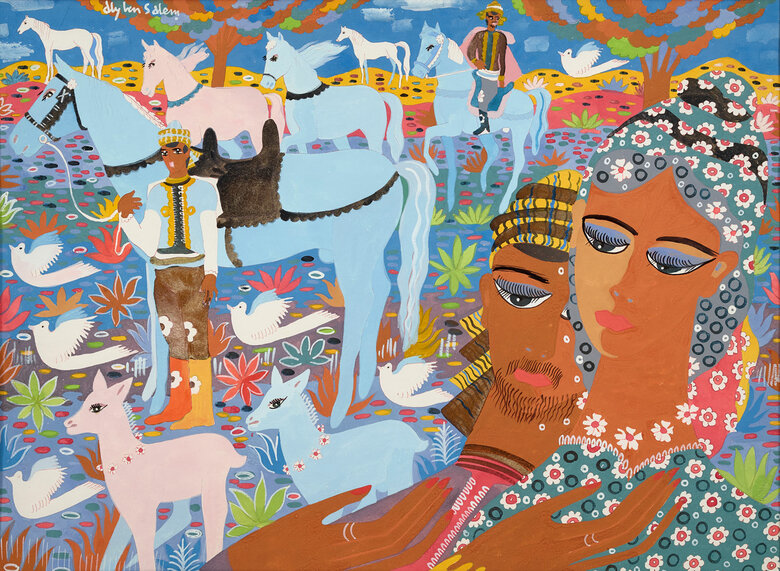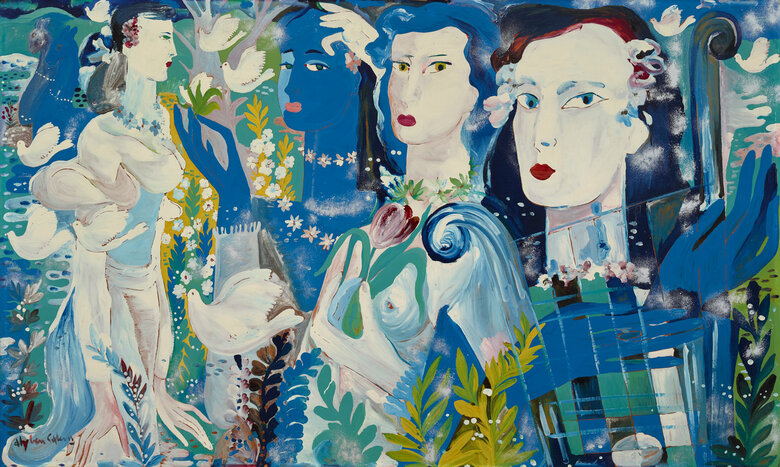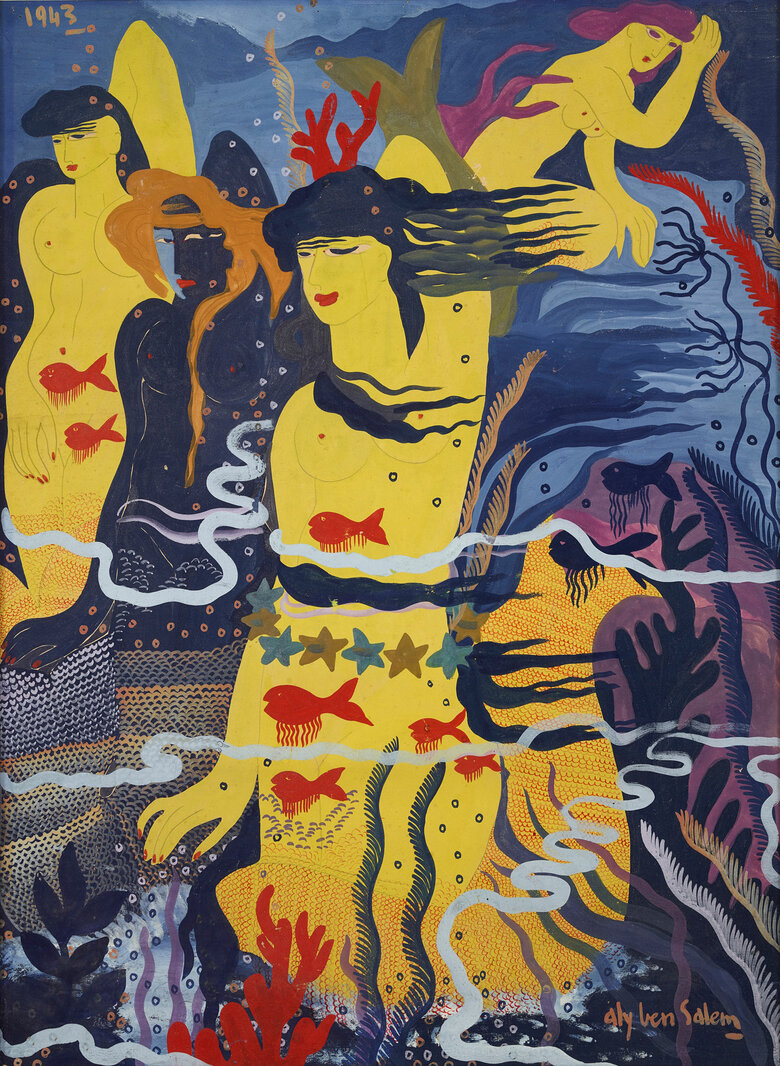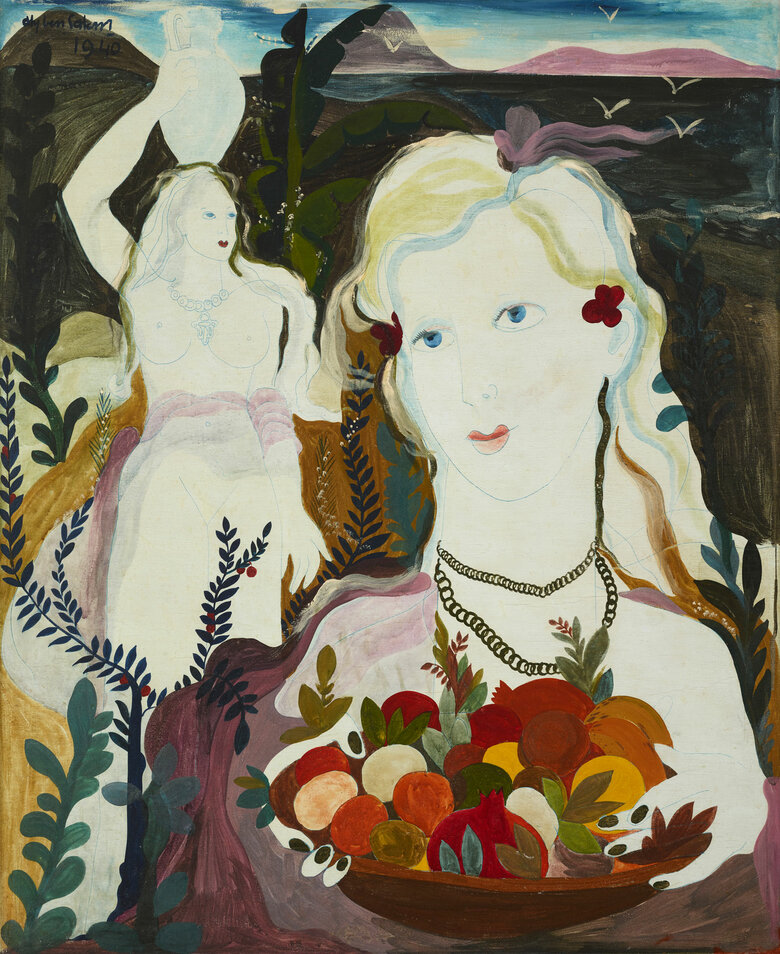Alongside Hatem El Mekki and Ammar Farhat, Aly Ben Salem is considered one of the pioneers of modern Tunisian painting. Born on December 25th, 1910, to a bourgeois family in a French-occupied...
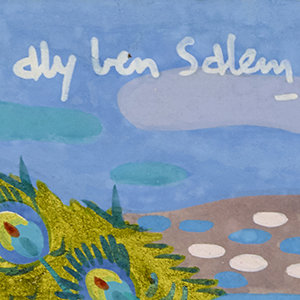

ALY BEN SALEM, Tunisia (1910 - 2001)
Bio
Written by NATHALIE BSAT
Alongside Hatem El Mekki and Ammar Farhat, Aly Ben Salem is considered one of the pioneers of modern Tunisian painting. Born on December 25th, 1910, to a bourgeois family in a French-occupied Tunis, he went to Lycée Carnot, a prestigious school for the city’s aristocrats and wealthy expatriates. There, his talent in drawing was recognized and encouraged, and the Lycée fostered a taste for painting in young Aly. Tunis itself was a catalyst in pushing the young man towards a career in fine art: he frequented creative social circles, and the vibrant city’s flourishing art scene boasted numerous galleries, theatres, cafés, and streets popular with easel painters who preferred to work en plein air (Avenue Jules Ferry, Kheireddine, or La Goulette for seaside painters). In 1930 Ben Salem started attending the School of Fine Arts in Tunis, which had been founded only seven years before in 1923. This private institution, the first art school in Tunis, was attended largely by the privileged children of aristocrats, and adhered to a strictly academic curriculum whose colonial tenets were reflected in the Salon Tunisien as well. In 1934 Ben Salem participated in the Salon and had his first solo exhibition in the prominent gallery Rotonde du Colisée. After his graduation from the Ecole des Beaux-arts, he moved to Sidi Bou Said, which was then considered the “Montmartre of Tunis” because of its bustling arts culture. It housed many famous painters and writers, Tunisian and foreign alike, including Albert Marquet, Jellal Ben Abdallah, Antonio Corpora, Jean Amrouche, Marcek Regui, André Gide, Montherlant, Jacques Revault, and Armand Guibert. Aly Ben Salem lived there for a year, leading a bohemian life while searching for work. It was a period during which the artist honed his senses, developing and refining the notions of beauty and perfection which would become the essence of his works.
Aly Ben Salem entered the Tunisian art scene when local artists were still scarce. The generation of artists before him were principally foreigners: European Orientalists favored by the colonial regime. These artists portrayed Tunisia with an eye to the West, attempting to conform to its trends in dialogue with their European colleagues. The resultant images depicted the misleadingly “primitive” and “indigenous” Tunisia that European audiences wished to see. With the new generation, of which Ben Salem was an integral member, Tunisian art witnessed a revolutionary turn: local artists appeared on the scene and shifted the perspective on Orientalism. These “neo-Orientalists” continued to depict traditional subject matter while resisting tendencies to sexualize, exoticize, or stereotype their subjects and attempting to portray the realities of everyday life rather than pandering to the fetishes of Europeans. This mini-revolution in the arts reflected the rising anti-colonial nationalism of the Tunisian youth, who increasingly advocated seeking independence from France.
At the beginning of the 1930s, Ben Salem worked at the local art museum (Dar al-Mestiri) as a scholar and collector of traditional arts. This archiving assignment turned the artist towards old Islamic art techniques. Several works produced at that time are now in the National Museum of Traditional Industries. Sustaining his interest in cultural heritage, Ben Salem started painting traditional costumes, folkloric gadgets, Tunisian daily life, and customary scenes, inspired by the objects he collected on travels throughout the country. He learned to repurpose old techniques of craft, such as weaving, glass painting, and jewelry making, to add innovative details to his art; Ben Salem became the illustrator of his heritage. With his pieces drowned in light and the vibrant colors of Tunis, he was also considered a painter of happiness, friendship, and optimism. Moving to Paris, and later Stockholm, he maintained this reputation as he became a staunch activist for the Tunisian people and their fight for independence.
Between the 1930s and 1940s, Aly Ben Salem’s work took a narrative approach focusing on Tunis and its locals, depicting everything from souks to artisans to wedding scenes. It was an academic period, during which the artist took stylistic inspiration from the traditions of the Italian Renaissance and its revival of ancient Greek and Roman conceptions of beauty. Ben Salem’s work from this period shows attention to the rules of perspective, symmetry, and anatomical proportions developed during this pivotal moment in Western art history and codified by Leonardo Da Vinci.
The 40s and 50s was a period of the artist’s career characterized by international exhibitions, extended stays in Paris and Stockholm, and relationships with artists such as Picasso, Braque, and Dali. In these formative years, the artist began to incorporate different elements in his paintings that would eventually become hallmarks of his aesthetic, including the rich palette of blues, whites, yellows, and pinks for which he would later be known.
By the end of the 1950s, Aly Ben Salem had abandoned his prior investment in academic painting traditions. From this point until his death in 2001, his work eschewed linear perspective and three-dimensionality in favor of flat, vertical space. His subjects became motionless in an attempt to deconstruct traditional figurations. This third and final period was impacted by the artist’s second wife, Swedish textile artist Kerstin Nilsson, who became his muse. Ben Salem also developed a passion for mosaics, integrating them into his work as a means of bridging modern art and traditional craftsmanship.
In his insistence on reinvigorating traditional Tunisian artforms, Aly Ben Salem championed the preservation of Tunisian heritage. He is remembered as a nationalist whose lifelong rejection of colonialism and commitment to Tunisian independence shone through his art practice.
Sources
"Aly Ben Salem, Peintre De La Beauté Sensuelle." Turess. Accessed April 19, 2018. http://www.turess.com/fr/lapresse/13608.
"Tunisia Daily Photos." Tunisia Daily Photo - La Tunisie En Photos - Photos Sur La Tunisie - Blogphoto Sur La Tunisie. Accessed April 19, 2018. http://www.tunisiadailyphoto.c...
Aly Ben Salem émotion De Loeil, Passion De Vivre: Actes Du Colloque Organisé Le 4 Octobre 2010. Carthage: Beït Al-Hikma, 2011.
KalsiSpecial, Jyoti. "Shining a Spotlight on North African Art." GulfNews. August 04, 2016. Accessed April 23, 2018. https://gulfnews.com/culture/arts/shining-a-spotlight-on-north-african-art-1.1873799.
CV
Selected Solo Exhibitions
2023
Aly Ben Salem: A Perfect World, Elmarsa, Dubai, United Arab Emirates
2010
Retrospective at Beit El Hikmah, Tunis, Tunisia
1958
Institut Français de Stockholm, Sweden
1934
Rotonde du Colisée, Tunis, Tunisia
Selected Group exhibitions
2024
Arab Presences: Modern Art And Decolonisation: Paris 1908-1988, Musée d'Art Moderne de Paris, Paris, France
On The Roster: Highlighting Elmarsa Gallery's Represented Artists, ELmarsa, Dubai, United Arab Emirates
2023
Partisans of the Nude: An Arab Art Genre in an Era of Contest, 1920-1960, Wallach Art Gallery, Columbia University, New York, USA
2020
Nuances of black and white,El Marsa Gallery, Dubai, UAE
Art on paper, Elmarsa, Dubai, UAE
2018
L’Ecole de Tunis: an introduction, El Marsa Gallery, Dubai, UAE
1936
Exposition Universelle de Paris.
Awards
2010
The Tunisian post issued a stamp representing Aly Ben Salem’s portrait
1993
Commandeur de l'ordre des Arts et des Lettres, Ministry of culture, France
1936
First Prize in painting by the Tunisian government, Tunisia
First Prize for North African Miniatures, Tunisia
Collections
Ramzi and Saeda Dalloul Art Foundation, Beirut, Lebanon
Etnografiska Museet, Stockholm, Sweden
Peter Willborg’s Collection, Sweden
National Museum of Modern and Contemporary Art, Tunis, Tunisia
Press
الصّحافة_ تجربة فريدة ومسيرة تشكيلية خلاّقة لـ«رسّام الجمال».pdf
Turess _ Aly Ben Salem, peintre de la beauté sensuelle.pdf
kapitalis_2017.pdf
Tunisie. Centenaire d’Aly Ben Salem, peintre du bonheur féminin.pdf
Turess_2010.pdf
TunisiaDaily_2007.pdf
L_economistemaghrebin_2013.pdf
Aly Ben Salem, le vétéran.pdf
أربعة رسامين من تونس فاروق يوسف مجلة الجديد.pdf
AlArab_2017.pdf
Shining a spotlight on North African art - MWT.pdf
علي بلاغة، على بن سالم، يحي التركي_ الخروف في 3 لوحات زيتية.pdf
ALY BEN SALEM Artwork
Become a Member
Join us in our endless discovery of modern and contemporary Arab art
Become a Member
Get updates from DAF
Follow Artists
Save your favourite Artworks
Share your perspectives on Artworks
Be part of our community
It's Free!
We value your privacy
TermsCookiesPrivacy Policies
Become a Member
Get updates from DAF
Follow Artists
Save your favourite Artworks
Share your perspectives on Artworks
Be part of our community
It's Free!
We value your privacy
TermsCookiesPrivacy Policies
Become a Member
Get updates from DAF
Follow Artists
Save your favourite Artworks
Share your perspectives on Artworks
Be part of our community
It's Free!
We value your privacy
TermsCookiesPrivacy Policies
Welcome to the Dalloul Art Foundation
Thank you for joining our community
If you have entered your email to become a member of the Dalloul Art Foundation, please click the button below to confirm your email and agree to our Terms, Cookie & Privacy policies.
We value your privacy, see how
Become a Member
Get updates from DAF
Follow Artists
Save your favourite Artworks
Share your perspectives on Artworks
Be part of our community
It's Free!
We value your privacy
TermsCookiesPrivacy Policies



